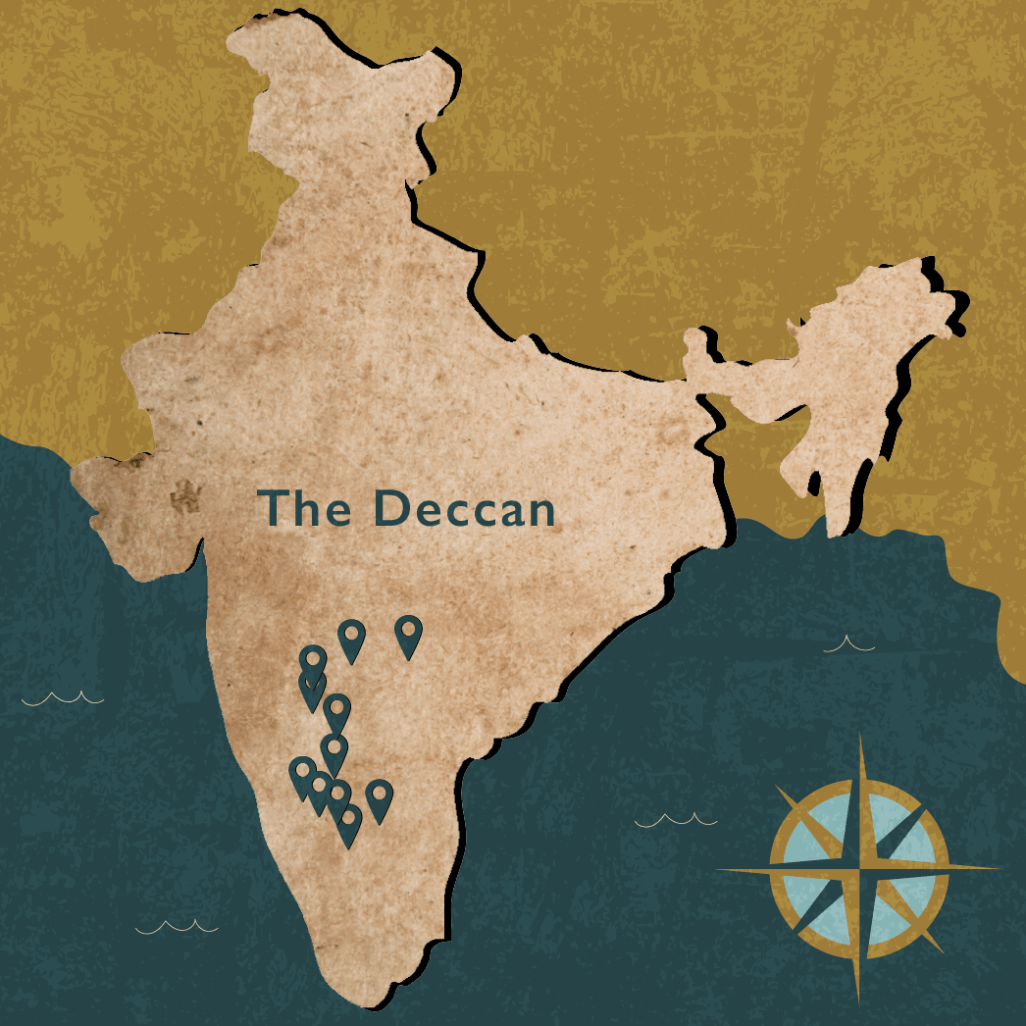


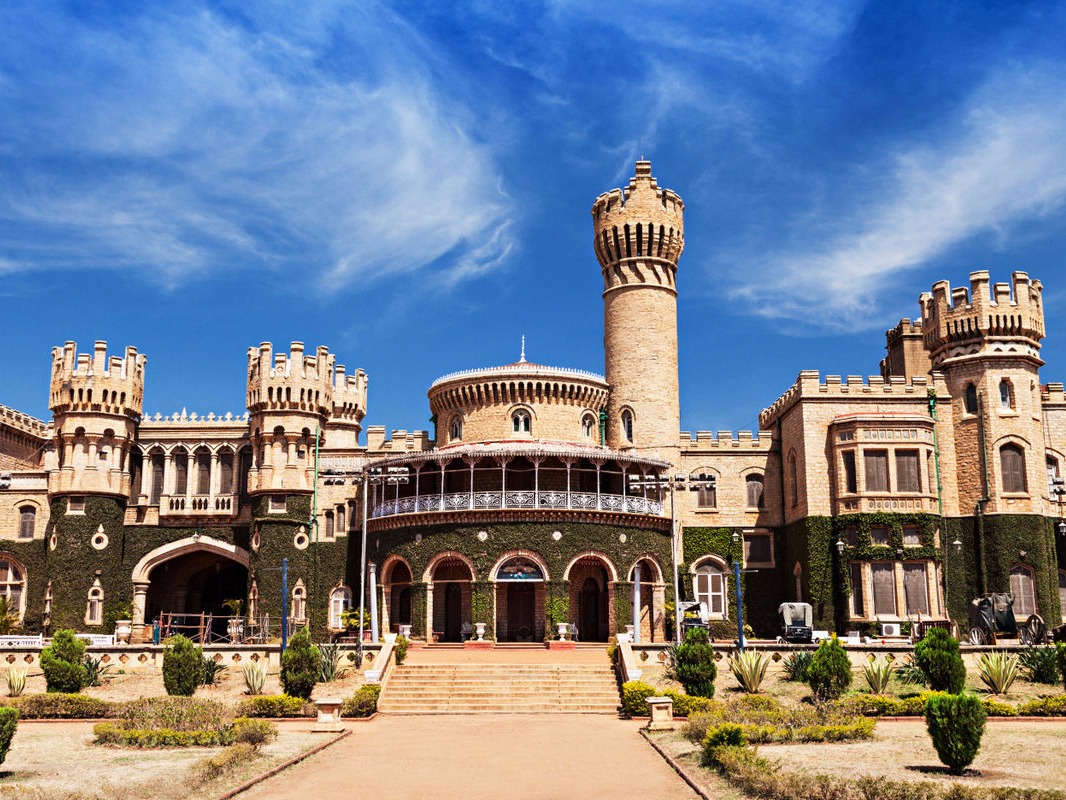
Arrive Bengaluru by an international flight. After clearing immigration and customs formalities you are met by a representative from First Tours India and transferred to The Taj West End, nestled in the midst of 20 acres of magnificent gardens. Bengaluru is a well-planned city of spacious gardens, beautiful parks, tree-lined boulevards, a profusion of flowering trees and imposing edifices, earning it the sobriquet of "Garden City of India". The city enjoys a salubrious climate throughout the year. With its booming economy and racy lifestyle, Bengaluru has metamorphosed from a sleepy garden city into one of India's fastest-growing, accommodating and cosmopolitan cities. It is often described as Asia's Silicon Valley because of its thriving Information Technology industries.
Taj West End

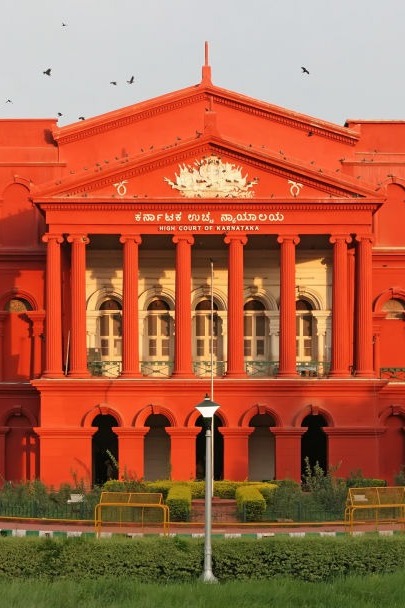
Meet your private guide in the morning and proceed for the sightseeing of Bengaluru. Visit Lalbagh Gardens, Tipu Sultan’s Palace, Cubbon Park, Vidhan Soudha and Bangalore Palace. Lalbagh Gardens regarded as one of the most richly diverse botanical gardens in South Asia and famous for the Glass House modelled on London's Crystal Palace. Founded by Haider Ali, the warrior-king of Mysore in 1740, the garden houses a splendid collection of about 1,800 species of tropical, subtropical and medicinal plants brought from Persia, Afghanistan and France. Built in 1791, Tipu Sultan’s summer retreat is a two-storied wooden structure with finely embellished balconies, cusped arches and fluted pillars. Drive past Vidhan Soudha, an imposing edifice housing the State Legislature and the Secretariat of Karnataka. Built of granite and porphyry, this building is capped by a 66 feet dome which is surmounted by the four-headed Ashokan lion, symbol of the Indian state. Cubbon Park was laid out in 1864 and spread over 335 acres. It’s partly formal landscaping imaginatively integrates natural rock out-cropping with groves of trees and giant bamboos. End the day with a visit to Bangalore Palace modelled on the lines of the Windsor Castle and the medieval castles of Normandy and England. Built by a Wodeyar King in 1880, the palace flaunts turreted parapets, battlements, fortified towers and arches.


Travel overland through scenic Karnataka countryside to Mysore. En route visit the fort, palaces and mausoleum date from the era of Tipu Sultan, the "Tiger of Mysore" at Srirangapatnam. The palace is mostly made of teakwood in the Indo-Sarcenic style and mode of architecture. The rectangular spread of the whole palace is raised on a platform and open corridors with wooden pillars on all its four sides were perfect for the balmy breeze in summer. Along with ornamental gardens beautifully carved wooden staircases and bays provide access to various halls and the ceilings are adorned with floral patterns. Every inch of the interior has been covered with fascinating floor-to-ceiling murals depicting courtly life and Tipu's campaigns against the British.

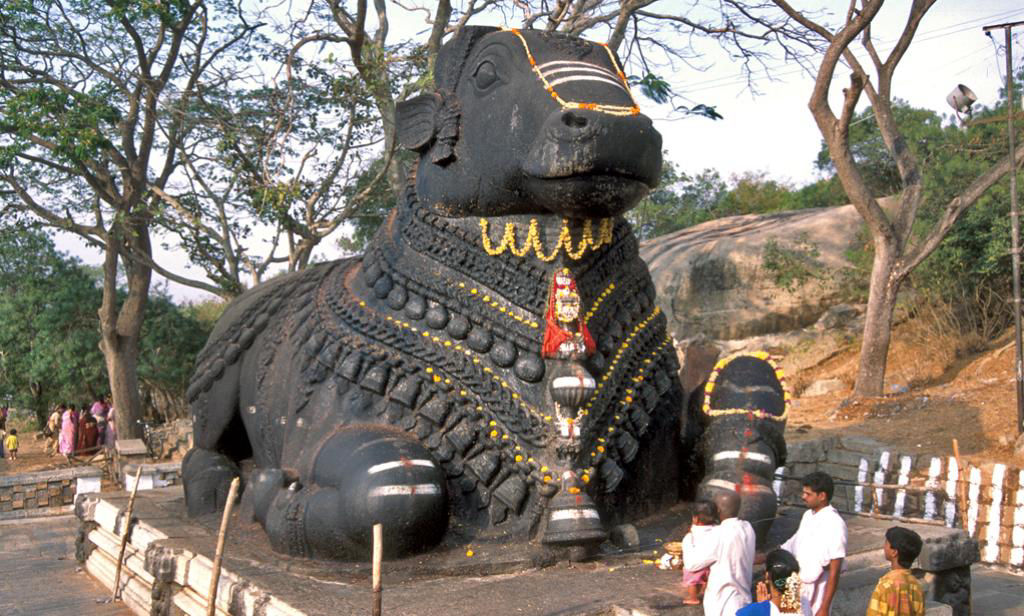
After sightseeing drive a short distance of 10 miles to Mysore and check-in to Windflower Resort & Spa. Set amidst 10 acres of greenery at the foot of the sacred Chamundi Hill, the resort rooms are stylish, elegant and peaceful and complement the natural surroundings beautifully. Mysore, the erstwhile capital of the Wadiyar Kings, is known for its magnificent palaces, majestic buildings, sprawling gardens, broad avenues, exceptional edifices, shimmering silks, sandalwood and salubrious climate. Today, it is a pleasant and growing city in Karnataka with seamless blend of old-world charm and modernity. In the afternoon visit Devaraj Market - Mysore's landmark. The market has much-photographed piles of colors used for decorating idols, the banana halls, the wonderful array of vegetables and above all the flowers, making a real treat for the senses.
The Windflower Resorts & Spa


In the morning visit the magnificent Amba Vilas Palace, a treasure house of exquisite carvings and works of art from all over the world. Built by the Wodeyar rulers, the main block of this Indo-Saracenic building with domes, turrets, arches and colonnades was designed by Henry Irving in 1897. Continue touring up to the Chamundi Hill and visit the Nandi monolith, dating to 1659 and carved out of a single boulder 25 ft. long and 16 ft. high. The richly decorated bull is depicted crouching. At the summit of the hill is the Chamundeshvari temple built in the 17th century by the Wodeyars and houses a beautifully decorated idol of the family deity. In the afternoon drive to Chikmagalur en route visiting Shravanabelagola, the sacred Jain site consists of two hills and a large tank. On one of the hills, Indragiri stands an extraordinary 59 feet high monolithic statue of naked male figure of Gomateshvara. After sightseeing, continue drive to Chikmagalur and check-in to Gateway Chikmagalur. Hideaway in the coffee district of Karnataka, the hotel is surrounded by mountains and snowy white blossoms.
Gateway Chikmagalur

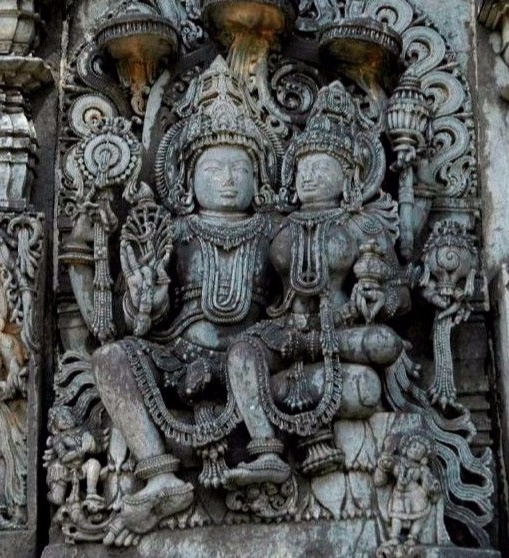
Drive to Halebid, the regal capital of The Hoysala Empire in the 12th century, to visit the Hoysaleshwara temple and Kedareswara temple. The ornate Hoysaleswara temple was built by Ketamala and attributed to Vishnuvardhana, the Hoysala ruler. It enshrines Hoysaleswara and Shantaleshwara named after the temple builder Vishnuvardhana Hoysala and his wife Queen Shantala. After sightseeing drive 11 miles west of Haledib to visit the Chennakesava temple and Viranarayana temple at Belur. One of the jewels of South Indian architecture, the Chennakesava temple was built in 1117 by King Vishnuvardhana to commemorate the Hoyasala triumph over the Cholas. These temples of Belur embody a fusion of the curving towers of North India with the columned Mandapas of the South and are characterized by their unique star-shaped plan and their rich surface decoration. The dense imagery of the basement friezes and wall panels sculpted with religious and mythological scenes as well as the exquisite bracket figures, are fashioned out of grey-green schist, a material that permits beautiful intricate carving.

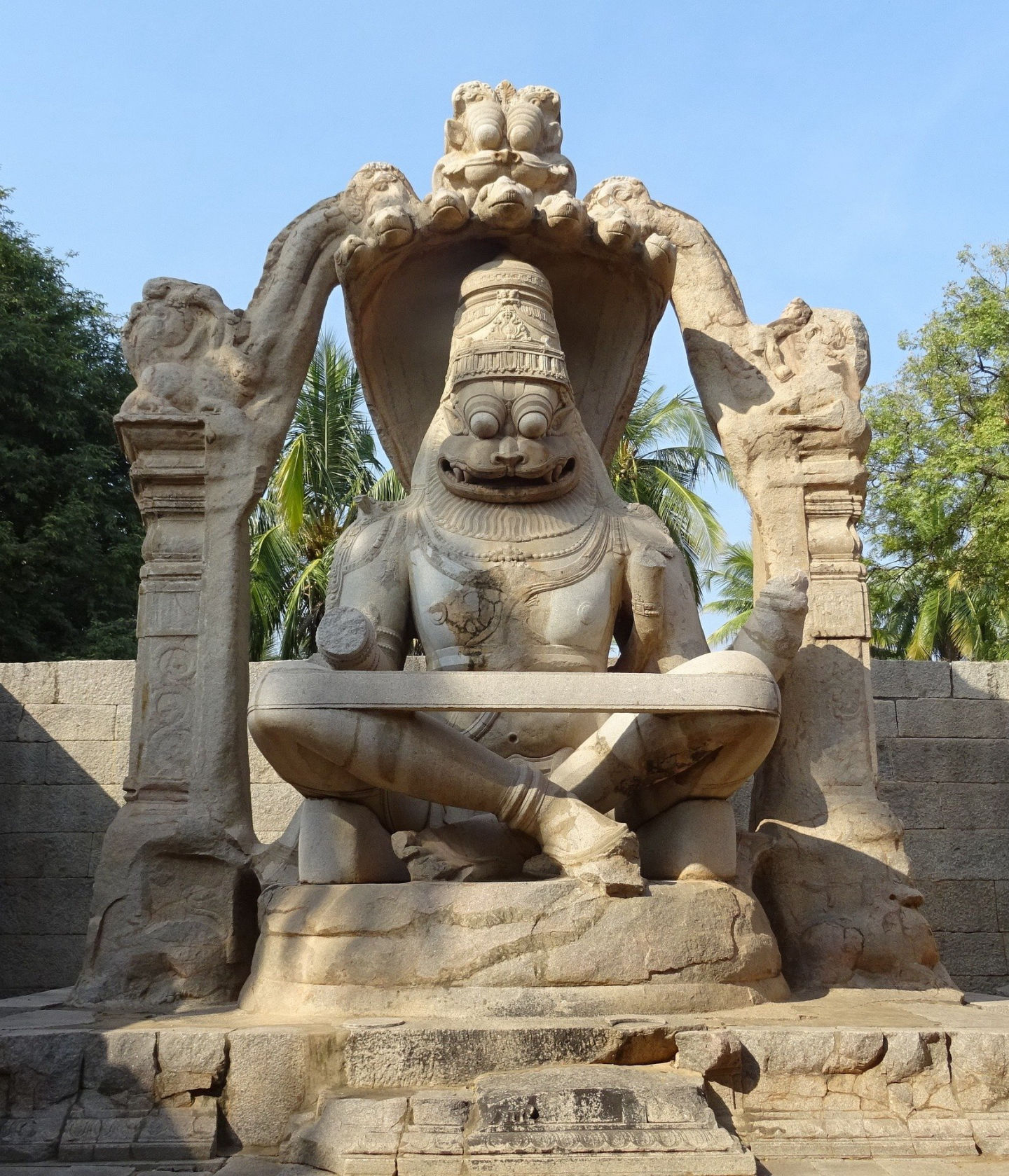
Today enjoy a spectacular journey to Hampi. En route visit the massive Chitradurga Fort. This picturesque fort was built in stages between 10th and 18th centuries by the dynastic rulers of the region including Rastrkutas, Chalukayas and Hoyasalas as well as the Nayakas of Chitradurga. However the Nayakas were most responsible for the expansion of the fort between 15th and 18th centuries. Later Haidar Ali and his son Tippu Sultan captured the fort and strengthen it further. After possible lunch at a local restaurant, continue drive to Hampi. Arrive Hampi and check-in to Evolve Back Kamalapura Palace, Hampi. With stunning rugged forests and boulders forming its backdrop, Evolve Back Kamalapura Palace is located just 4 km from the UNESCO World Heritage Site of Hampi. Its fort like entrances, stone-paved boulevards, arched hallways and regal chambers mirror the famed palaces of a bygone but glorious era.
Evolve Back Kamalapura Palace

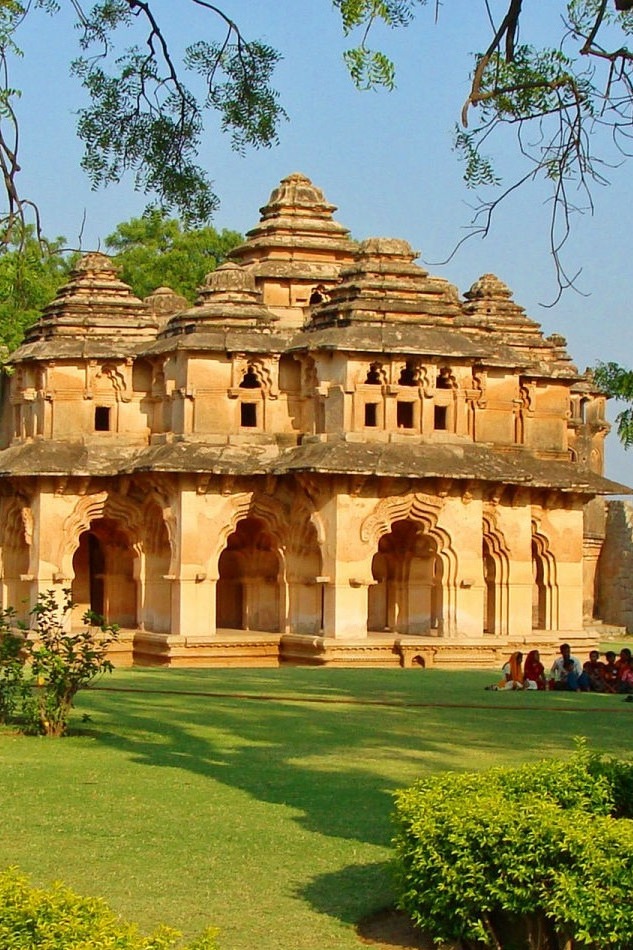
Hampi was the capital of the powerful Vijayanagar Empire and a great centre of Hindu rule for 200 years. This fabled city was once enormously wealthy with a market full of jewels and palaces plated with gold. A UNESCO World Heritage Site on the south bank of the Tungabhadra River, Hampi boasts the evocative ruins of Vijayanagar or the "city of Victory". The capital of three generations of Hindu rulers for more than 200 years, Hampi reached its zenith from 1510-1542. The site, which comprises the Sacred and Royal Centre, has a superb location, with rocky ridges and granite boulders acting as natural defense. The urban core of the city was fortified and separated from the Sacred Centre by an irrigated valley, through which ancient canals and waterways still run. The Vijayanagar architecture is a vibrant combination of the Chalukya, Hoysala, Pandya and Chola styles, idioms that prospered in previous centuries. Its legacy of sculpture, architecture and painting influenced the development of the arts long after the empire came to an end. While the empire's monuments are spread over the whole of Southern India, nothing surpasses the vast open-air theatre of monuments at its capital at Vijayanagar. In the morning explore the ruins of the sacred centre of the forgotten empire that sprawls across a spectacular barren and boulder-strewn landscape. Visit the two large monolith Ganesha sculptures and numerous small temples scattered on the on the Hemakuta hill. Proceed to the Virupaksha temple. The ancient temple of Virupaksha dedicated to Goddess Pampa and her consort Shiva is dominated by 50 meters high gopura. Also visit the ruins of Hampi Bazaar, Monolith bull, Lakshmi Narasimha temple and the Narasimha Monolith, carved out of a single boulder in 1528. This awe-inspiring image of Vishnu shows him in his half man-half-lion incarnation. In the afternoon visit the ruins of the Royal Centre of the Vijayanagar Empire. Explore the small Hazara Rama temple; the two storeyed Lotus Mahal in the Zenana or ladies quarter; domed Elephant Stables; Royal Enclosures; decorated Mahanavami Dibba from which the royal family watched the pageants and tournament during the Navaratra festivities; the small Stepped Tank and the aqueduct system that brought water to the Royal Centre and the Queen's Bath - an open-air structure designed for royal recreation. End the day with a visit to the famous Vitthala temple. The grandest of all the religious monuments in the Sacred Centre, the Vitthala temple represents the high point of Vijayanagar art and architectures. This striking temple with its elaborate mandapas is dedicated to Vitthala an incarnation of Lord Vishnu

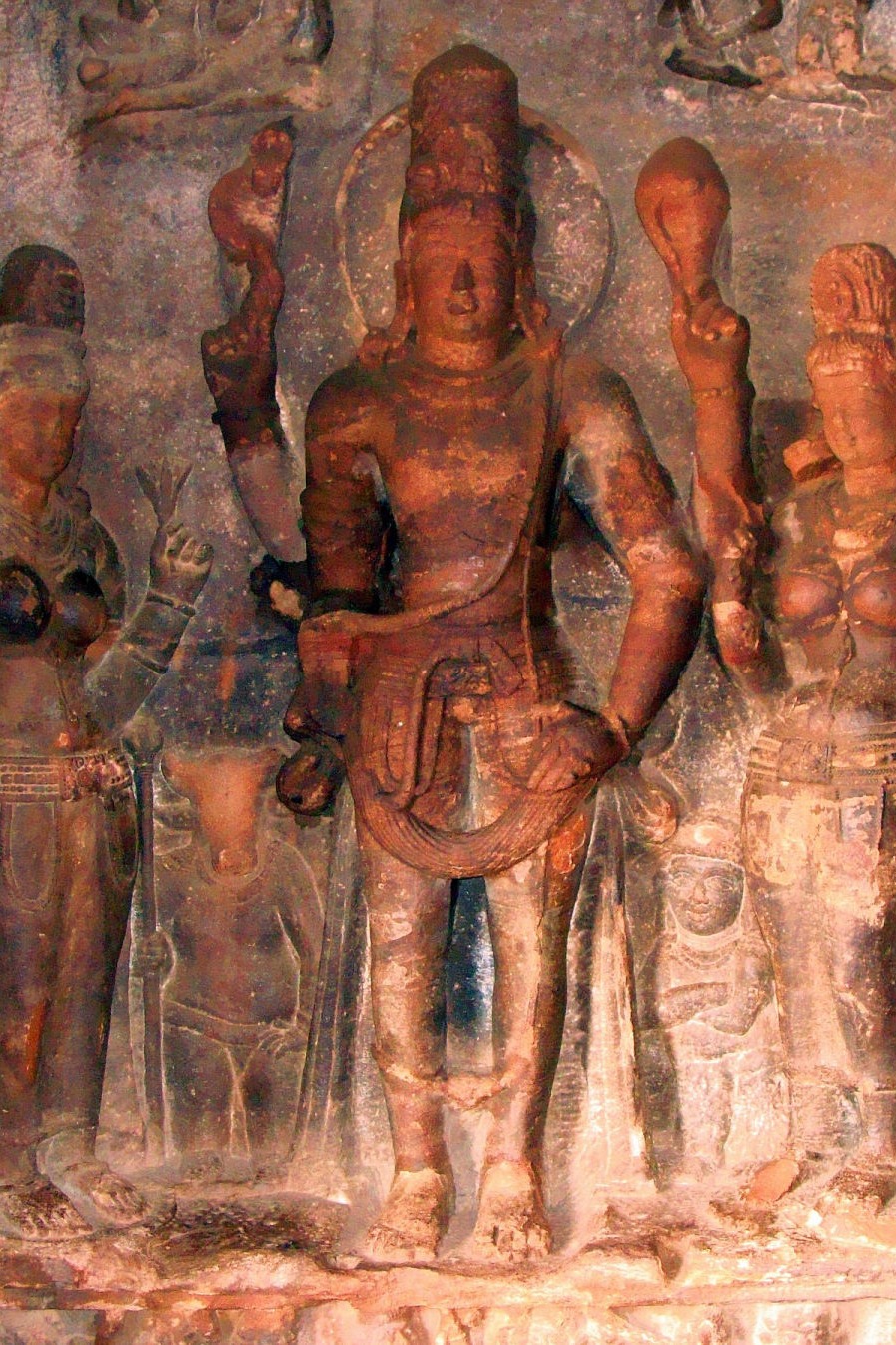
Travel overland to Badami, picturesquely situated within a horseshoe of red sandstone cliffs overlooking the green waters of the large Agastya Lake. Once called Vatapi, after a demon, the historic town of Badami was the capital of the powerful early Chalukya kings. On arrival, check-in to Hotel Badami Court. In the afternoon explore Badami. Visit the richly decorated cave temples carved into the cliff on the southern side. These cave temples are dedicated to Shiva, Vishnu and Jain saints. Proceed to the 11th century Yellamma temple with multi-storied tower. Afterwards visit the Jambulinga temple with triple shrines dedicated to Brahma, Vishnu and Shiva. Continue on to the Bhutanath temple scenically located at the end of the Agastya Lake. Later drive to the Mahakuta temple complex, described as a gem containing examples of Chalukyan temple architecture that houses about 24 shrines dedicated to Lord Siva.
Hotel Badami Court

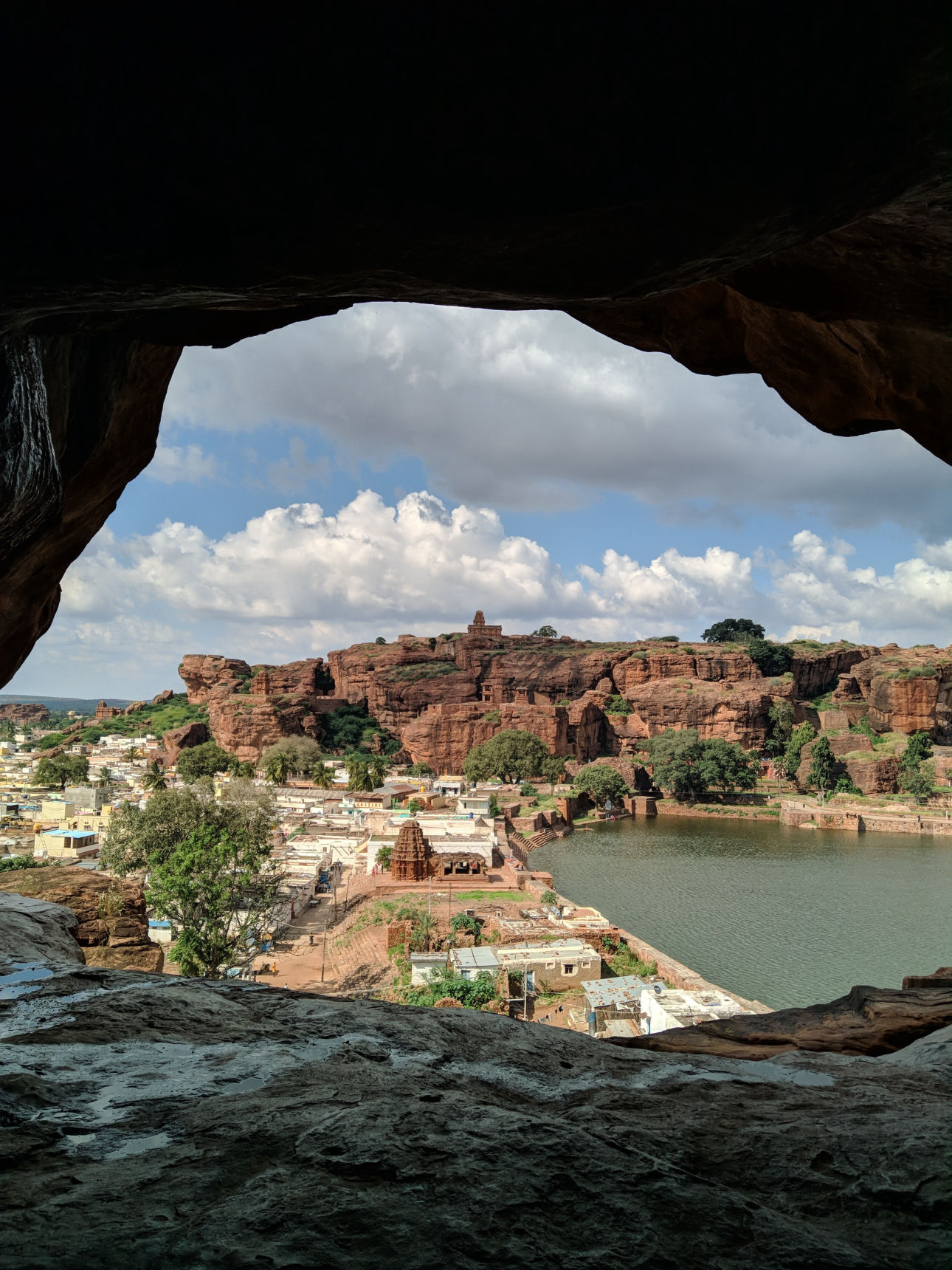
In the morning drive to Aihole, a tranquil hamlet on the banks of the Malaprabha River. Aihole is acclaimed as the cradle of ancient Hindu temple architecture and provided the blueprints for the temples that were built later all over South India. There are about 125 temples, all intricately carved and rich in detail located within the fort walls. These temples illustrate a range of developing styles from Hoyasala, Dravida, Jain, Buddhist, Nagar and Rekhangara. Visit some of the important temples like the Durga temple, the Lad Khan temple, the Ravala Phadi cave temple and the Jain Meguti temple. The most impressive one is the Durga temple with its apsidal sanctuary surrounded by an open colonnade. Proceed to Pattadakal, the second capital of the Chalukyas. With its beautifully chiseled temples, this UNESCO World Heritage Site is picturesquely situated on the banks of the Malaprabha River. Pattadakal reached its pinnacle glory under the Chalukya kings and was mainly used for royal festivities and coronation ceremonies. The sacred complex of Pattadakal displays both the southern Dravidian temple architecture as well as the north Indian Nagar style side by side. Visit the Virupaksha temple, the Mallikarjuna temple and the Jain temple before returning to Badami in the late afternoon.

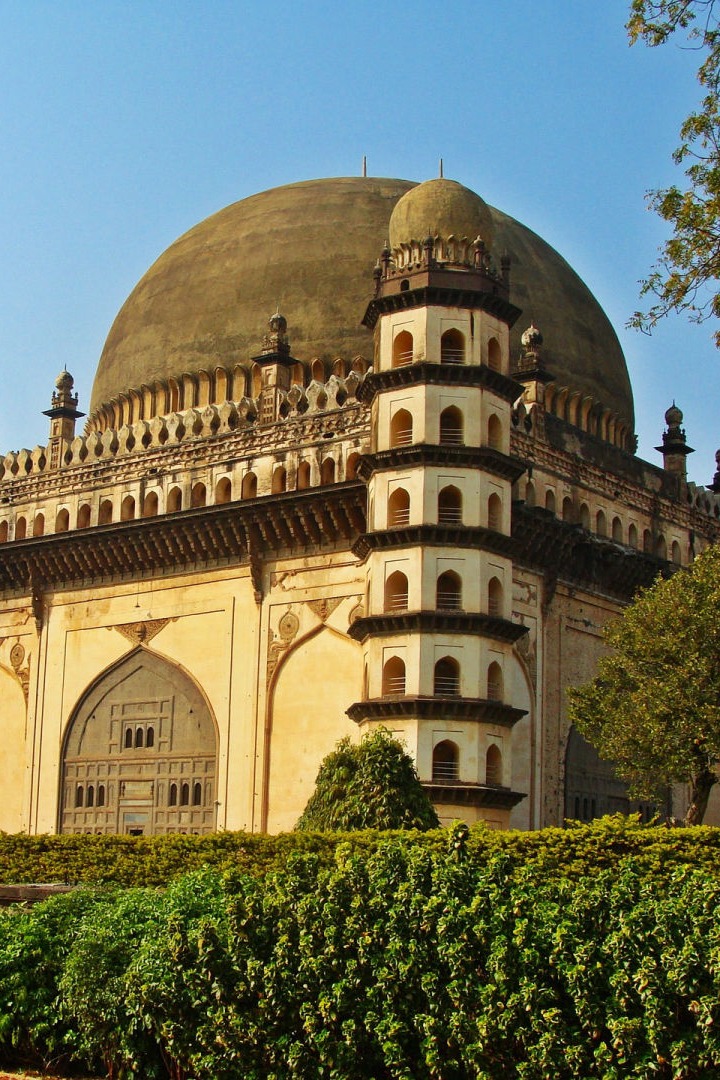
Depart Badami and drive 4 hours to Bijapur. The one-time capital of the Adil Shahi Dynasty, Bijapur is dotted with splendid mosques, mausoleums, palaces, fortifications and watchtowers with the massive Gol Gumbad dominating the landscape for miles around. The citadel in the heart of the city is defined by its own fortified walls and surrounded by a wide moat. This ceremonial centre of Bijapur was once the palace complex and housed many grand palaces. The walled city outside the citadel is scattered with monuments built by the Adil Shahi sultans. In the afternoon explore Bijapur visiting Gol Gumbad, the monumental tomb of Muhammad Adil Shah. The slightly bulbous dome of Gol Gumbad is the largest in the world after St Peter's in Rome. Continue on to visit Ibrahim Rauza built by Ibrahim II for his wife. This exquisite mausoleum is often described as the finest Islamic edifice in the Deccan. Also visit Jami Masjid. With its graceful arches, aisle halls, intricate designs and the large shallow crowning onion shaped dome, it is regarded as the jewel of the Adil Shahi architecture.
Hotel Pearl

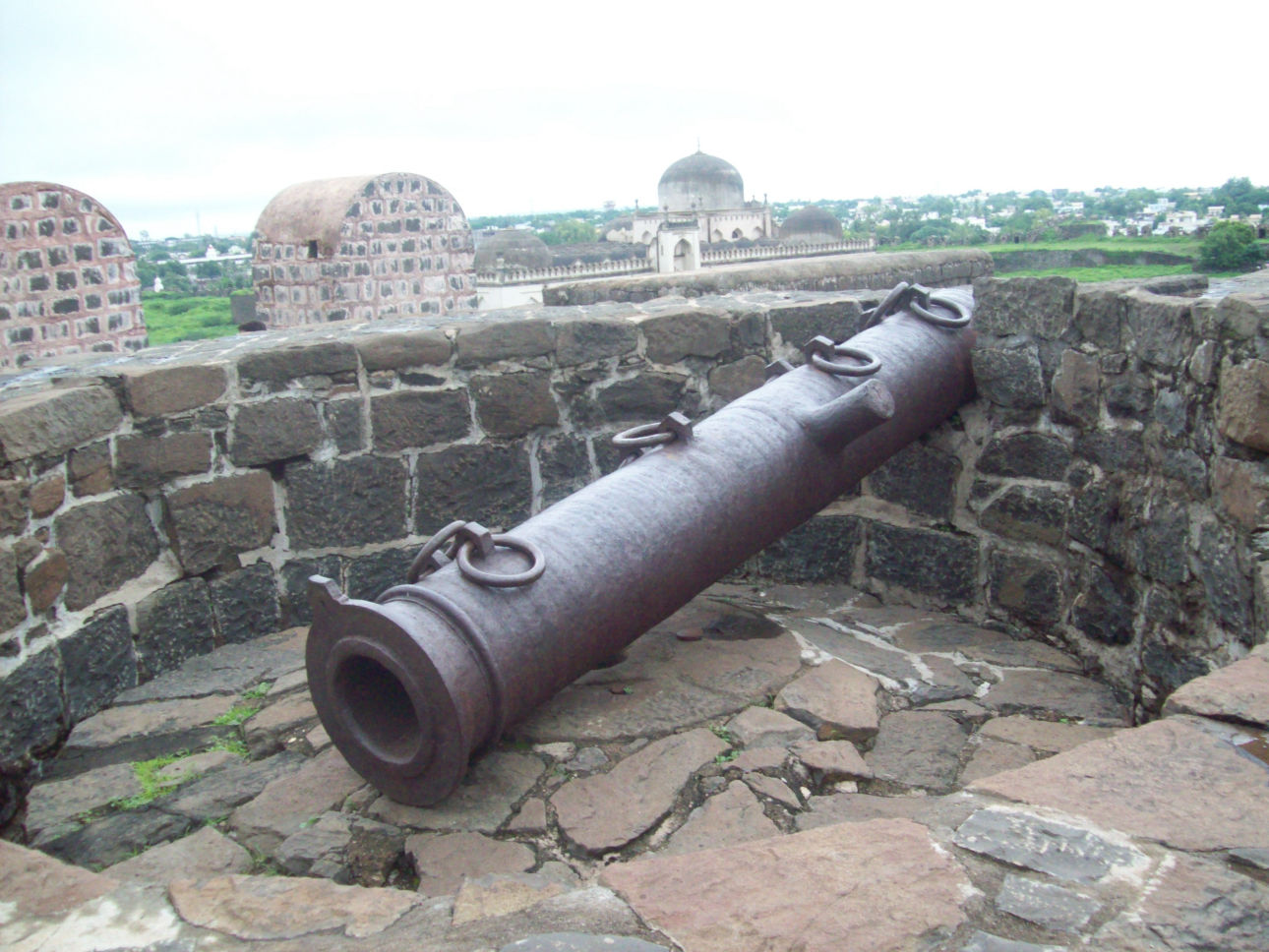
After breakfast travel overland to Gulbarga, the first capital of the Bahamani Kingdom. It is also widely known among South Indian Muslims as the home of Saiyid Muhammad Gesu Daraz Chisti who was instrumental in spreading pious Islamic faith in the Deccan. The most striking remains in the town are the fort with its citadel and mosque, the Jami Masjid and the great tombs in the eastern quarter – massive fortress-like buildings with their distinctive domes over 30 meter high. After possible lunch explore various important sites in Gulbarga and later drive 5 hours to Hyderabad. On arrival check-in to Taj Falaknuma, a luxury palace hotel where you can retrace the steps of Nizams, European royalty, enchanting Begums, distinguished Heads of State and walk the walk of Kings through this Palace in the Sky, 2000 feet above Hyderabad.
Taj Falaknuma Palace

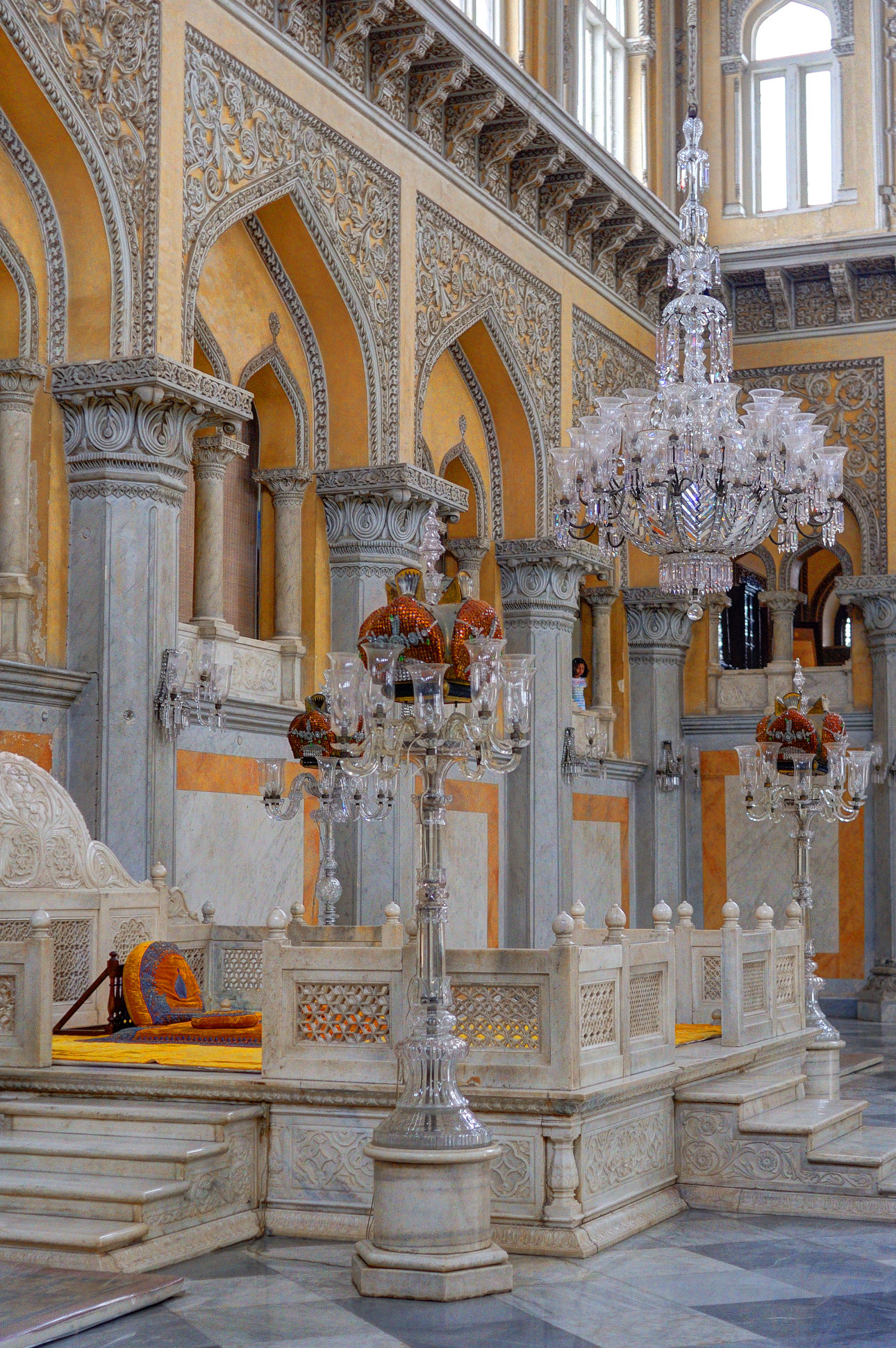
Founded by Mohammed Quli Qutb Shah, the fifth king of Golconda, Hyderabad gives a fascinating glimpse of past splendors the legacy of its four hundred-year-old history. Hyderabad, the sixth largest city in India, was planned as a grid with the Charminar as its centre. In the morning explore the old city of Hyderabad. Visit the Char Minar, built by Sultan Mohammad Quli Qutb Shah as a showpiece at the centre of his beautiful city. Proceed to Mecca Masjid, the grand mosque started in 1614 by Sultan Abdulla Qutb Shah. Built of black granite slabs this vast mosque can accommodate 10000 at prayers. Walk through Bangle Street and Lad Bazaar area. This area is located in the heart of the Muslim part of the city and consists of interesting buildings with wood and stone carvings and pink elephant gates. Visit the Paigah Tombs belonging to the nobles of the Paigah family. These are magnificent structures, decorated in stucco work and represent the Mughal, Greek, Persian, Rajasthani and Deccani style of architecture. The geometrical designs in the Paigah Tombs are unique and are perforated with screens with great craftsmanship. In the afternoon visit the massive Golconda Fort build on a granite hill. The Fort, originally built of mud in the 12th century by the Hindu Kakatiya kings, is surrounded by three walls. One encircles the town, another the hill on which the citadel stood and the last joined huge boulders on the high ridge with parts of masonry wall. Also explore Golconda, the capital of the Qutab Shahi kings who ruled over the area from 1507 to 1687. Visit the Qutab Shahi tombs located on a low plateau about 2625 feet north-west of Golconda Fort. The Qutub Shahi tombs represent the most authentic and majestic display of the architectural traditions of the Qutub Shahi dynasty. The grandeur of the tombs is ensconced amidst the beautiful and picturesque landscape and gardens of Ibrahim Bagh.

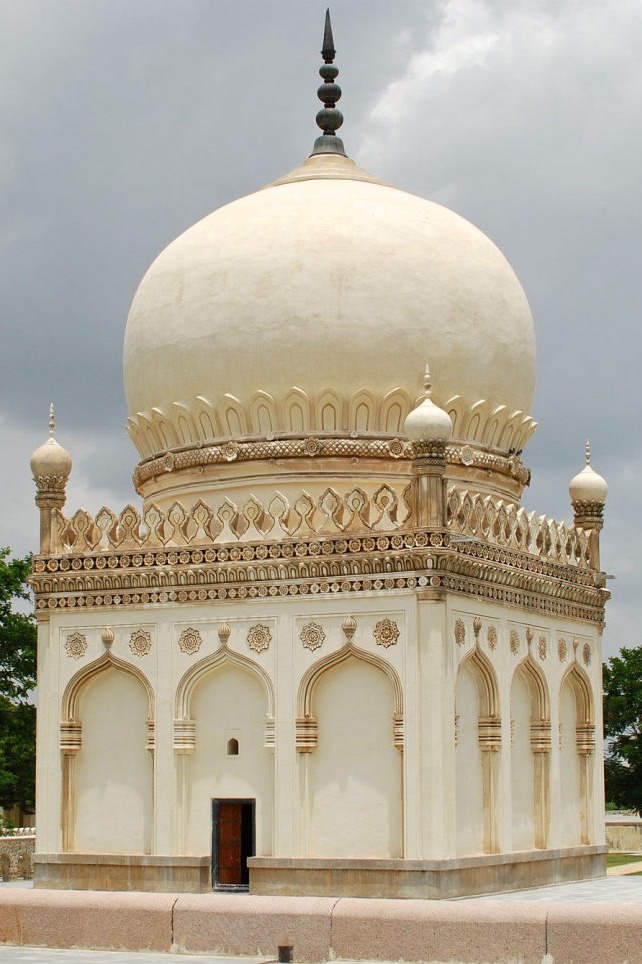
The vibrant city of Hyderabad was the seat of the fabulously wealthy royal family, the Asaf Jahi Nizams until 1947. Today visit the Salar Jung Museum that houses the famous veiled Rebecca, the translucent white marble statue by Bezoni. The Salar Jung Museum is the third largest museum in India housing the biggest one-man collections of antiques in the world. It is well known throughout India for its prized collections belonging to different civilizations dating back to the 1st century. Nawab Mir Yousuf Ali Khan Salar Jung III, former Prime Minister of the seventh Nizam of Hyderabad spent a substantial amount of his income over thirty-five years to make this priceless collection. Following this visit Badshahi Ashurkhana or the house of mourning built in the Qutb Shahi style at the end of the 16th century. Also visit the magnificent Chowmahalla Palace. Once regarded as the center of Hyderabad, Chowmahalla Palace was the seat of the Asaf Jahi dynasty where the Nizams entertained their official guests and royal visitors. Built over 200 years ago, Chowmahalla is renowned for its unique style and elegance. A synthesis of many architectural styles and influences, the Palace Complex has been meticulously restored.

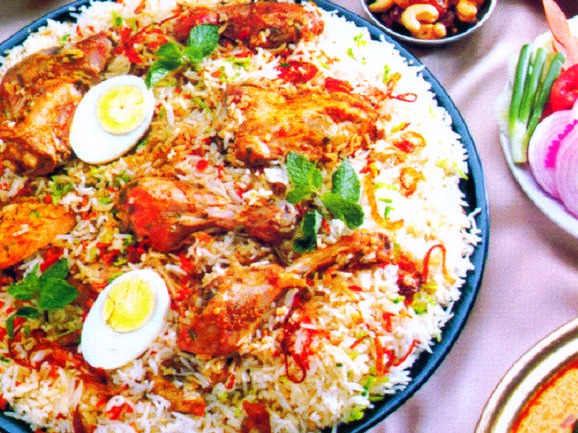
Board your homebound flight with colorful memories that will add untold pleasure to last for a lifetime.
